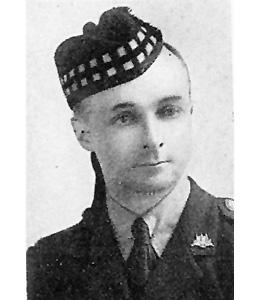Died of his wounds aged 22
Buried in cemetery of St Jean at Contrai, Belgium C 29
Thomas was born in London the son of William, barrister and journalist, and Frances, of 48 Holmdale Road, West Hampstead. He was Captain of Lancing School 1903-4 and in the Classical Sixth for four years. He was in the Shooting VIII from 1901 to 1904 being Captain in his last season.
He went up to Oxford in 1904 as a Scholar of Christ Church, took a Second in Classical Moderations in 1906, and two years later his final degree in Law. He gained his Blue for Shooting at Oxford, representing the University in 1905, 1907 and 1908. He was Lance Corporal 679 in the London Scottish 1/14th Battalion London Regiment (London Scottish), a very active member, excelling on the range, and in 1909 nearly won the St George’s in Bisley.
On coming down from Oxford he continued his legal studies and qualified as a Solicitor in 1912.
He was in New York when war broke out, but returning by the first boat he rejoined his old regiment in St Albans and embarked for France with the London Scottish on the SS "Winifredian" on 15 September 1914 at Southampton, landing at Le Havre the following morning. He saw action in the London Scottish’s famous engagement at Messines, the first Battle of Ypres, on 31 October where they became the first territorial unit to go into action in the Great War.
In January 1915 he took a commission in the Army Ordnance Corps and might have remained in that position, but when he saw the War was dragging out he felt it his duty to return to the Infantry, and was transferred to the King’s Own Scottish Borderers.
He was wounded on the Somme near the Butte de Warlencourt on 20 October 1916, when the 6th KOSB successfully attacked and captured “Snag” Trench near the Butte at 4.00pm, and afterwards spent some time at the Regimental Depot in Scotland.
On 23 February 1918 he married Alice Kate, daughter of James Morty, grocer, and a former Mayor of Wallingford, at Emmanuel Church, Hampstead, and five weeks later went to the front for the last time.
While based at Ouderdam in Belgium (just behind Kemmel) he led an honour party of 50 men for an inspection by M. Clemenceau, the French statesman, the date is not known but it appears to be shortly before his death.
On the night of the 11th/12th of April 1918 he took a patrol out to Potsdam Farm in the Ypres sector and captured an enemy officer and one enemy soldier. He was in command of his company in the German attack on Mount Kemmel on 25 April 1918, when the Germans broke through the line at Kemmel Hill where the KOSB were in support of 12th Royal Scots who were massacred. KOSB held the assault but with huge casualties. Thomas was afterwards reported wounded and missing. He died of his wounds and was buried on 28 April 1918 in the cemetery of St Jean at Contrai in Belgium.
His Estate amounted to £396 2s 9d. Probate granted to his widow.


